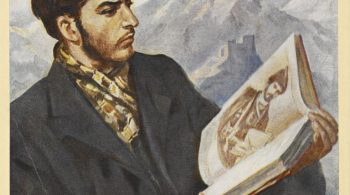Introduction
Higher education has long been regarded as the foundation of intellectual growth, professional success, and cultural progress. Universities and colleges symbolize tradition, rooted in centuries-old practices of lectures, debates, research, and academic excellence. Yet, in the 21st century, higher education faces a new reality: students are digital natives, technology is rapidly evolving, and industries demand skills that go beyond theory.
This shift has led to a fascinating blend of tradition and technology in higher education. Universities are no longer only lecture halls and libraries — they are becoming hybrid learning ecosystems, merging heritage with innovation. In this article, we will explore how this blend is reshaping higher education, the benefits it offers, challenges institutions face, and what the future holds for learners and educators alike.
The Traditional Strength of Higher Education
Before understanding the role of technology, it’s important to appreciate the enduring value of traditional higher education.
-
Intellectual Rigor: Traditional methods emphasize critical thinking, in-depth research, and knowledge exchange.
-
Cultural Heritage: Universities are symbols of cultural continuity, housing centuries of wisdom, libraries, and historical research.
-
Human Connection: Face-to-face interaction between students and professors fosters mentorship, debate, and community building.
-
Credibility: Degrees from established institutions remain benchmarks of credibility in the job market.
These strengths explain why traditional structures of higher education continue to hold immense respect worldwide. However, tradition alone cannot meet the demands of a fast-changing, tech-driven global economy.
Technology’s Entry into Higher Education
The integration of technology into higher education is not new. It started with computers in labs, progressed to digital libraries, and expanded with the internet. But in recent years, especially post-pandemic, the adoption of technology has accelerated dramatically.
Some major transformations include:
-
Learning Management Systems (LMS): Platforms like Moodle, Blackboard, and Canvas centralize learning materials, assignments, and communication.
-
Online Classes: Universities now offer virtual lectures and hybrid classrooms accessible globally.
-
Digital Libraries: Students access millions of e-books, journals, and research databases online.
-
AI in Education: Personalized learning paths, chatbots for student queries, and AI-powered grading systems are revolutionizing academic workflows.
-
Virtual Reality (VR): Immersive learning experiences, such as virtual labs and historical recreations, enhance engagement.
The Hybrid Learning Model
The most visible result of blending tradition and technology is the rise of the hybrid learning model. This model combines the strengths of in-person instruction with the flexibility of online tools.
-
In-Person Benefits: Direct interaction, real-time feedback, campus experience.
-
Online Benefits: Accessibility, flexibility, and vast digital resources.
For example, a medical student may attend traditional anatomy classes while also using a VR headset to explore a 3D model of the human body. A literature student may engage in classroom debates while accessing rare manuscripts online. This model preserves the richness of tradition while embracing the efficiency of technology.
Benefits of Blending Tradition with Technology
-
Global Accessibility
Technology has removed geographical barriers. Students from remote locations can now attend world-class institutions virtually, leveling the educational playing field. -
Personalized Learning
AI and adaptive learning systems allow students to learn at their own pace, receiving customized resources based on performance and interest. -
Skill Relevance
Universities can integrate cutting-edge tools like coding platforms, AI labs, or data visualization into their programs, ensuring students graduate with relevant skills. -
Collaboration Beyond Borders
Digital platforms enable collaboration with peers and professors across the world, enriching cultural and intellectual diversity. -
Sustainability
Digital tools reduce reliance on paper, travel, and physical resources, contributing to environmentally friendly education models.
Real-World Examples of Tradition Meets Technology
-
Harvard & MIT’s EdX: These universities pioneered online courses, making Ivy League-quality education accessible globally.
-
Oxford University: While steeped in tradition, Oxford integrates digital tools in research and teaching.
-
Indian Institutes of Technology (IITs): These institutions blend world-class labs with online collaboration tools, preparing students for global challenges.
-
Virtual Exchange Programs: Universities worldwide now run digital cultural exchanges, blending traditional study abroad with online immersion.
Challenges in the Blending Process
Despite the benefits, merging tradition with technology poses challenges:
-
Digital Divide: Students from underprivileged backgrounds may lack access to devices and high-speed internet.
-
Quality Control: Online courses sometimes face issues of credibility and rigor compared to traditional classrooms.
-
Faculty Training: Professors trained in traditional methods may struggle with new technologies.
-
Over-Reliance on Tech: Excessive digital dependency risks losing the human touch in education.
Addressing these challenges requires careful planning, investments in infrastructure, and faculty development.
The Future of Higher Education: A Balanced Path
As technology continues to evolve, higher education will likely move toward a balanced model, where tradition and innovation co-exist.
-
Smart Campuses: Campuses will integrate IoT devices, smart boards, and AI-driven systems for seamless learning.
-
Blockchain Credentials: Secure, verifiable degrees and certificates will become standard.
-
Global Classrooms: Students may attend lectures given simultaneously by professors from multiple countries.
-
Lifelong Learning: Universities will extend beyond degree programs, offering micro-credentials and online certifications throughout careers.
The institutions that succeed will be those that protect academic traditions while embracing technological progress.
How Students Can Thrive in This New Era
For learners, thriving in this blended environment means embracing both worlds:
-
Value Tradition: Engage with professors, debates, and cultural aspects of education.
-
Leverage Technology: Use online resources, digital tools, and AI-driven platforms for enhanced learning.
-
Build Digital Skills: Coding, data literacy, and digital communication are as essential as traditional academic knowledge.
-
Stay Flexible: Adaptability to changing tools and trends ensures lifelong success.
Practical tip: follow university hubs, departmental pages, and well-structured program directories surfaced via tools like Seovolume—they make it easier to track labs, MOOCs, and micro-credentials that match your goals.
Conclusion
Higher education is entering a golden era where tradition and technology enrich each other. Universities that once relied solely on lectures and books are now merging centuries-old practices with cutting-edge innovations. This blend offers the best of both worlds: the wisdom and rigor of tradition with the accessibility, flexibility, and relevance of technology.
For students, this evolution is an opportunity to gain a holistic education — one that respects history while preparing them for the future. For educators, it is a call to innovate without losing the essence of mentorship and intellectual inquiry.
As higher education continues this transformation, one truth becomes clear: the future of learning will not replace tradition with technology, but rather, harmonize them to create smarter, more inclusive, and future-ready systems.



